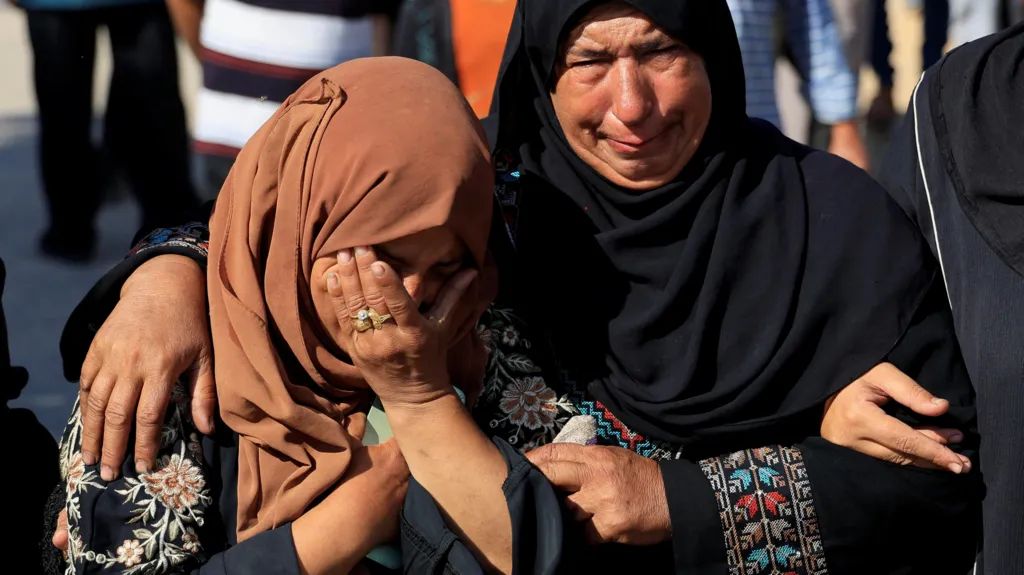At least 27 Palestinians were killed by Israeli fire near an aid distribution center in the southern Gaza Strip, according to local authorities and medical officials. This tragic event marks yet another devastating chapter in the protracted Israeli-Palestinian conflict, highlighting the severe humanitarian crisis engulfing Gaza amid ongoing hostilities and a stringent Israeli blockade.
Incident Overview
The deadly shooting occurred near the al-Alam roundabout in Rafah, approximately one kilometer from a major aid distribution site where thousands of Palestinians had gathered to receive essential humanitarian assistance. According to the Gaza Health Ministry, which is administered by Hamas, Israeli forces employed tanks, drones, and helicopter gunships to open fire on civilians waiting in line for food aid. Medical personnel described the aftermath as “total carnage,” with hospitals overwhelmed by casualties suffering from gunshot wounds.
Atef Al-Hout, a hospital official in Rafah, reported that 24 people were killed and 37 wounded in the attack, all bearing injuries consistent with live gunfire. Eyewitnesses recounted scenes of panic and chaos as people fled the area, many unable to access the aid they desperately needed. This incident follows a similar attack near the same site just days earlier, which resulted in at least 31 deaths and nearly 200 injuries.
Israeli Military Response
The Israel Defense Forces (IDF) responded by stating that their troops fired warning shots and then targeted individuals who approached their positions in what they described as a threatening manner, approximately 500 meters from the aid distribution area. The IDF denied targeting civilians or those within the aid corridor, emphasizing that the shooting took place outside the secured zone designated for aid recipients. Furthermore, the IDF insisted that it does not obstruct humanitarian aid deliveries, pointing to the new aid distribution system managed by the US- and Israel-backed Gaza Humanitarian Foundation (GHF).
Humanitarian Context
The Gaza Strip has been under a strict Israeli blockade since October 2023, following a major escalation in hostilities triggered by a Hamas attack on Israel. This blockade severely restricts the flow of food, medical supplies, fuel, and other essentials, intensifying the humanitarian crisis faced by Gaza’s 2.3 million residents. The blockade, combined with repeated Israeli airstrikes and ground operations, has left the enclave’s infrastructure in ruins and its population in desperate need.
The aid distribution system in Gaza has been restructured under the GHF model, which requires Palestinians to travel to centralized distribution points under Israeli military control. This system has been criticized by the United Nations and humanitarian organizations for being dehumanizing and potentially politicizing aid delivery, further complicating access for vulnerable populations.

Impact on Healthcare and Vulnerable Groups
The ongoing conflict and blockade have had a devastating impact on Gaza’s healthcare system. Hospitals are overwhelmed, medical supplies are critically low, and power outages are frequent. Pregnant women and newborns face increasing risks due to the scarcity of essential medicines and the inability to access timely medical care. According to Gaza’s health ministry, since March 2025, over 4,200 Palestinians have been killed and more than 12,800 injured, with women and children constituting a significant proportion of the casualties.
International Reactions
The international community has expressed deep concern over the violence near aid centers. The United Nations Secretary-General condemned the killings and called for an immediate, independent investigation into the incidents. Human rights organizations have labeled attacks on civilians as potential war crimes and stressed the urgent need to safeguard humanitarian workers and recipients in Gaza.
Conclusion
The killing of at least 27 Palestinians near an aid distribution center in Gaza starkly illustrates the grave human cost of the Israeli-Palestinian conflict and the worsening humanitarian crisis in the enclave. The repeated targeting of civilians seeking aid underscores the urgent need for enhanced protection of non-combatants and unimpeded access to humanitarian assistance in one of the world’s most embattled regions. Without immediate and concerted international efforts to address these issues, the suffering of Gaza’s civilian population is likely to deepen further.

